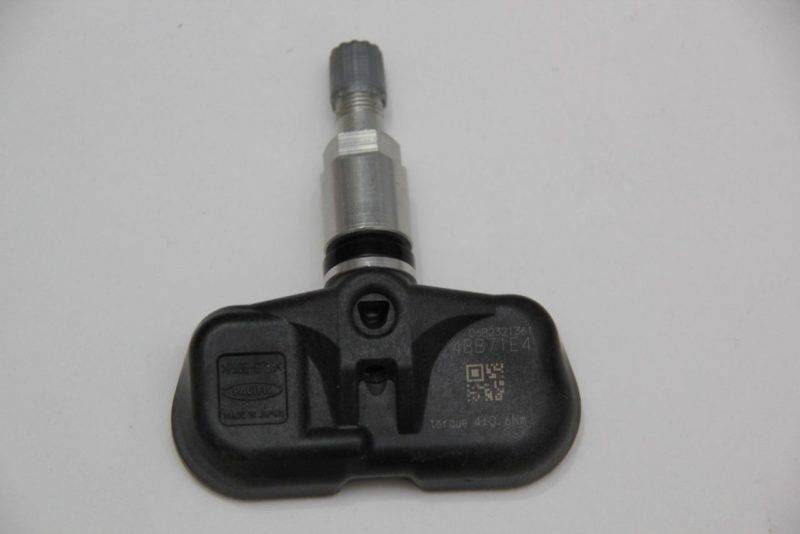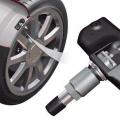Tire pressure monitoring is important both in terms of fuel economy and durability, as well as in terms of driving safety. Modern devices, such as various types of pressure sensors, provide convenient and effective control over the inflation rate of the tires. Working on the principle of visual and audible warning when indicators deviate from the norm, these devices make it easier to control the vehicle.
Pressure sensors with a monitor are one of the most convenient solutions. Photo: fis.ru
Why are pressure sensors needed?
The deviation of tire pressure has a lot of negative consequences, both with an increase and a decrease from the nominal values of this value. Pumping up to a level of 2 atm is considered optimal.
If there are downward deviations from the norm:
- When the indicator changes downward, the possible consequences are an increase in fuel consumption, which can be up to 1.5 liters per 100 km with a decrease in pressure by 0.5 atm.
- With insufficiently inflated wheels, contact with the road surface occurs along the line of the side surfaces, as a result of which their wear is accelerated.
Upward:
- If the tires are over-inflated, the contact area between the wheel and the road changes. This is due to the fact that due to the shape of its surface, the adhesion of the central part increases with insufficient contact of the side surfaces with the canvas. This leads to accelerated wear of these areas.
- A tire with an increased pressure reduces the life of the body and suspension because it has a low ability to cushion the shock transmitted by the wheel. In addition to a less comfortable ride, the heating of the tire that occurs in this case can provoke an explosion of the tube.
Tire inflation indicators make it easy to maintain the tire inflation rate within optimal performance limits.
How the tire pressure sensor works

Changing the degree of inflation of the wheels, depending on the type of installed indicator, either changes the color of the built-in cap, or transmit an electronic signal to the monitor of the tracking system when using radio sensors. Photo: kazan.compax.ru
Caps equipped with color indicators that change color depending on the degree of inflation of the tires from normal (green) to critical (red). Inside, the cap, mounted on the wheel nipple, contains a piston, the indicator of which changes color depending on the pressure level. The principle of operation of the tire pressure sensor is that when it decreases by 0.3 atm at a nominal value of 2 atm, the color changes to yellow, and when it falls by another 0.4 atm, the color of the sensor acquires a red tint.
Cap manufacturers offer a wide range of transducers with nominal pressures ranging from 1.8-3.6 atm, which allows them to be used on various types of mobile devices.
Among the advantages of such indicators:
- ease of installation, in which for the installation of structures of low weight (5g) it is not necessary to balance tires and disassemble the wheel;
- ease of replacement of indicators that have exhausted their resource.
Disadvantages of cap sensors:
- low degree of protection against thieves;
- lack of control of the degree of inflation of tires during movement;
- low susceptibility of the system to pressure fluctuations.
A variety of cap-type sensors is known, which are driven by a miniature battery. The disadvantages of this design, in addition to the disadvantages listed above, include the low tightness of the system, since the installation and operation of such a system provide for the open position of the nipple. The advantages include higher measurement accuracy due to the use of an electronic signal instead of mechanical piston pulses.
Among motorists, indicators of the degree of inflation of tires, using an autonomous battery as a drive, enjoy good reviews, while pulses are transmitted from the receiving device to the tracking systems by means of radio signals.

The set includes one sensor for each wheel, a temperature control system, an information receiving system and a block for reading signals coming from it. Photo: data.jc9.ru
The indicators are recorded at intervals of once every quarter of an hour during parking or once every 5 minutes when the car is moving. Such systems require an installation in which the sensor is mounted under the surface of the nipple after the wheel has been disassembled. In addition, such systems are subject to mandatory balancing taking into account the weight (30g) of the installed indicator. The negative properties of such a system include the complexity of the installation.
The design provides many advantages, including:
- High tightness provided by nipple closure and retention with a cap.
- Accuracy that provides low time readings while detecting rapid changes in tire inflation rate.
Anti-theft protection
An even more complex design in comparison with the one described above is a tire pressure monitoring sensor made in the form of a microchip. This system contains the entire database of the optimal values of speed, pressure and temperature; type of device; its dimensions and release date. The disadvantage of the design is the impossibility of installation outside the manufacturer. In addition, the accuracy of the indicators can be influenced by the driving mode, the presence of obstacles on the road, and uneven surface relief. The signal from the microchip built into the bus structure can go both to the tracking devices in the car, for example, a monitor, and to the driver's mobile phone or gadget.
Other features of tire pressure sensors can be found in this video:
Possible malfunctions
The operation of any of the described devices includes the possibility of breakdowns, some of which can be eliminated during service at a service station. Among the main malfunctions of pressure control sensors:
- In the event of a malfunction, the device is flashed to coordinate the operation of the indicators on different wheels. This operation can be performed by a driver with the skills to install software on a car or by a specialist from a service station.
- Mismatch in the operation of monitoring devices, which with a high probability can occur when replacing or restoring a punctured tire. At the same time, their readings may be overestimated, the repair consists in zeroing the reader.
- Mechanical damage associated with the failure of the nipple or other structural elements of the system are eliminated by contacting a specialized service center.
- One of the malfunctions is an electronic TPMS error. To eliminate the error message, you can use such a method as turning off the tire pressure sensor or turning off the warning light. This can be done by physically deactivating the tire pressure monitoring system or by removing the indicator light from the vehicle dashboard.
The most common disadvantage of automatic systems is battery drain on the indicator drive device. In this case, after the expiration of the service life, which, depending on climatic conditions, is up to 5 years, it is necessary to replace the battery.
To replace the battery in the tire pressure sensor, proceed as follows:
- dismantle the indicator, after which, in the area with a rounded surface, it is necessary to make cuts along the contour of the element;
- there is a battery under the filling, soldered to the contacts using microwelding, you can check its serviceability using a tester, the discharge phase is characterized by zero readings of the device;
- replace the battery, ensuring a tight fit of the battery to the contacts, for which it is necessary to fix the device, using a needle to deepen it into the filling of the indicator body;
- Degrease the surface above the battery and fill with silicone filler to the level of the body.
Outcome
A variety of designs for pressure control provides wide variability in the choice of price-performance ratio acceptable to the driver. Some manufacturers practice the production of tires in which pressure control is carried out according to the deviation from the norm of the contact area of the tire with the ground. In any case, the use of these devices will not only greatly facilitate the operation of the vehicle, but also make the movement on it safer.




